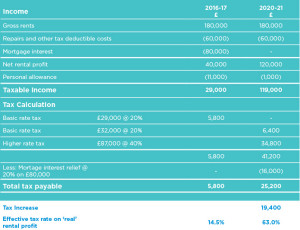Each spouse is taxed separately, and so it is an important element of basic income tax planning that maximum use is made of personal reliefs and the starting and basic rate tax bands. It may be necessary to consider gifts of assets (which must be outright and unconditional) to distribute income more evenly.
Currently, a transfer of just £1,000 of savings income from a higher rate (40%) taxpaying spouse to one with income below the personal allowance of £10,600 (£11,000) may save up to £400 a year. For those paying the additional rate of tax of 45%, which applies to those with taxable income above £150,000, the saving may be £450 a year.
Tip 1
It is also possible to transfer part of the personal allowance between spouses. A marriage allowance of £1,060 (£1,100) can be transferred between spouses for 2015/16 onwards where neither spouse pays tax at above the basic rate.
Income from assets jointly owned by spouses is generally shared equally for tax purposes. This applies even where the asset is owned in unequal shares unless an election is made to split the income in proportion to the ownership of the asset. The exception is dividend income from jointly owned shares in ‘close’ companies which is split according to the actual ownership of the shares. Close companies are broadly those owned by the directors or five or fewer people.
Tip 2
If you are self-employed or run a family company, consider employing your spouse or taking them into partnership as a way of redistributing income. This could be just as relevant for a property investment business producing rental income as for a trade or profession.
Comment
Care must be taken because HMRC may look at such situations to ensure that they are commercially justified. If a spouse is employed by the family business, the level of remuneration must be justifiable and the wages actually paid to the spouse. The National Minimum and Living Wage rules may also impact.
Child Benefit
If you are in receipt of Child Benefit and either you or your live-in partner (widely defined) have income above £50,000, then it is possible that you may have to pay back some or all of the benefit through the High Income Child Benefit Charge. If you think this may affect you please contact us as it might be possible to reduce the impact of this charge. This could be achieved by reducing your income for this purpose. Methods include making additional pension contributions or charitable donations or reviewing how profits are shared and extracted from the family business.
Children
Children have their own allowances and tax bands. Therefore it may be possible for tax savings to be achieved by the transfer of income producing assets to a child. Generally, this is ineffective if the source of the asset is a parent and the child is under 18. In this case the income remains taxable on the parent unless the income arising amounts to no more than £100 gross per annum.
Tip 3
Consider transfers of assets from other relatives (eg grandparents) and/or employing teenage children in the family business to use personal allowances and the basic rate tax band.
Remember that children also have their own capital gains tax (CGT) annual exemption (see Capital gains section).
Tax free savings
A Junior ISA (for children born from 3 January 2011) or Child Trust Fund (CTF) accounts offer tax free savings opportunities for children. Existing CTF accounts continue alongside the Junior ISA (a child can only have one type) but can be transferred to a Junior ISA at the request of the registered contact for the CTF.
Both CTF and Junior ISA accounts allow parents, other family members and friends to invest up to £4,080 annually in a tax free fund for a child. There are no government contributions and no access to the funds until the child reaches 18.
Throughout this publication the term spouse includes a registered civil partner. We have included the relevant amounts for 2015/16. The 2016/17 figures are shown in brackets where these are known and different.
If you require any assistance or further information about the above please do not hesitate to contact us on our contact page. To find out more about the services that we offer, visit our Services page.





